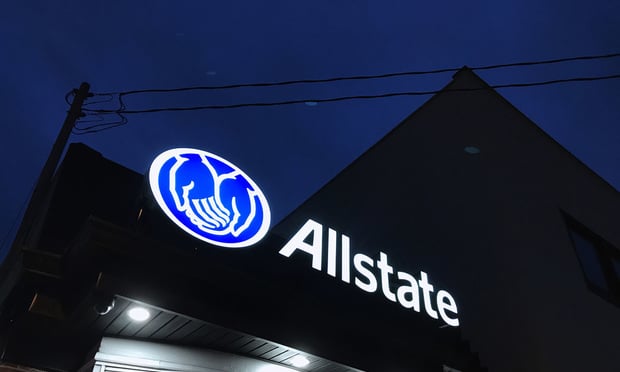Once the gavel struck, it was evident that certain cases would send ripples throughout the P&C industry and continue to etch the litigation landscape for years to come. As claims professionals, which judgements resonated with you? Did some render you virtually speechless?
The current issue of Claims Magazine features a sampling of some of the year's most noteworthy legal developments. Here, we continue the discussion with case outcomes that were, by and large, positive.
This is by no means a comprehensive list. For more timely news and analysis on cases involving subrogation, bad-faith allegations, and other pertinent issues to the P&C claims industry, be sure to visit PropertyCasualty360.com's loss litigation channel.
Topic: Excess Coverage

Case: American Medical Response Northwest Inc. (AMR Northwest) v. Ace American Insurance Co. (AMR)
Alleging a breach of contract, AMR Northwest and AMR sued their excess commercial umbrella liability insurers, ACE and National Union Fire. The insurers had denied coverage for 14 underlying state court actions in which it was asserted that an AMR Northwest employee sexually abused, or inappropriately touched female ambulance passengers during transport.
The insurers argued that under Colorado law, bodily injury can never qualify as an “occurrence” if the immediate cause of the injury is an intentional act. An Oregon federal judge concurred, finding that an intentional sexual assault by a negligently hired or negligently supervised employee does not constitute an “accident” or an “occurrence” within the scope of meaning of the ACE or National Union policies.
The judge also noted that, upon reviewing the litany of underlying complaints, there was prior knowledge on the defendants' part that the employee had sexually abused patients. There was a sense that given these prior actions, the employee would likely abuse again.
Topic: Policy Limits

Case: Wayne DeMarco v. Travelers Insurance Co.
Two passengers were seriously injured in a high-speed car accident. Travelers insured the driver and his transportation company under a liability policy with a $1 million limit.
While one passenger agreed to settle for $450,000, the other, Wayne DeMarco, insisted that Travelers “acted wrongly” by refusing him the full policy amount. Travelers rejected his settlement demand, because paying the limit to DeMarco would have left the driver and his company without any protection against the claim of the other passenger. A jury found in favor of DeMarco, however, awarding him more than $2.8 million.
Following the trial, DeMarco accepted a payment of $550,000 from Travelers and provided the driver and transportation company with a release of all liability. DeMarco subsequently filed a claim against Travelers. He then asserted that the insurer was strictly liable for the entire amount of the judgment and interest, based on Travelers' rejection of his $1 million settlement demand. His conclusion was based on the Asermely Rule, which states “if an insurer declines an opportunity to settle a case within the limit of the insurance policy, then it does so “at its own peril.”
The Rhode Island Supreme Court, however, clarified that the Asermely Rule does not impose strict liability on an insurer that rejects an offer to settle within limits established by the policy. Instead, the court held that, when an insurer has rejected an offer to settle within the policy limit, a reasonable care standard must be applied to determine whether it is liable for any amount in excess of the insured policy limit.
Topic: RICO

Case: Mark G. Hardy v. National Association of Insurance Commissioners (NAIC) and the National Conference of Insurance Guaranty Funds Inc. (NCIGF)
Mark Hardy, president of Petrosurance Inc., the sole shareholder of the Oil & Gas Insurance Co., which is insolvent, sued the NAIC and the NCIGF. He claimed that the organizations were in violation of the Racketeer of Influenced and Corrupt Organizations (RICO). Hardy alleged that both the NAIC and NCIGF had engaged in a “decade-long pattern of racketeering activities and conspiracies with others to defraud … all U.S. insurance consumers.”
The NAIC and NCIGF moved to dismiss, arguing that Hardy lacked standing to assert RICO claims in that the claims “are predicated on injury to third parties” and that Hardy “has failed to sufficiently plead any personal, direct injury as a result of the alleged RICO … violations.”
The judge found that the RICO claim should be dismissed because Hardy did not demonstrate that he suffered an “injury-in-fact” that was casually connected to the alleged conduct.
Topic: Inverse Condemnation

Case: Unigard Insurance Co. v. Los Angeles Department of Water & Power (LADWP)
A downtown Los Angeles, Calif. business' high-end apparel store incurred damage when smoke infiltrated its premises through the air conditioning system. The source of the smoke was a mystery as the Fire Department responded to the incident, but never observed any fire.
Later, Unigard's representative, Cozen O'Connor, was able to prove that the smoke originated within and traveled through DWP's underground distribution system that housed their transformers.
Their theory, somewhat novel, contended that DWP was liable for the smoke damage under an inverse condemnation theory. Inverse condemnation is a legal term describing a situation where private property is taken or damaged by a public entity that fails to compensate. To establish a claim for inverse condemnation, it is not necessary for the plaintiff to prove negligence or foreseeability by the public agency.
DWP argued that Cozen O'Connor could not prove that the smoke originated in their system. They further asserted that the most logical source of the smoke was a discarded cigarette in one of their sidewalk vents that provides ventilation to their underground transformer vault.
The court, however, found that the only logical and reasonable conclusion that could be drawn from the evidence, gathered by Cozen O'Connor, was that the smoke originated from DWP. The court also contended that it was not necessary to prove the precise origin of the smoke whether it was from charred debris, a transformer, cable, switch, connection, or some other element of the DWP system.
Even if the cause of smoke was a source from outside the system, like a discarded cigarette, the court found that DWP was ultimately responsible because the origin of the smoke had occurred within its vents.
The court, found in favor of Unigard, resulting in a $650,000 recovery.
Want to continue reading?
Become a Free PropertyCasualty360 Digital Reader
Your access to unlimited PropertyCasualty360 content isn’t changing.
Once you are an ALM digital member, you’ll receive:
- Breaking insurance news and analysis, on-site and via our newsletters and custom alerts
- Weekly Insurance Speak podcast featuring exclusive interviews with industry leaders
- Educational webcasts, white papers, and ebooks from industry thought leaders
- Critical converage of the employee benefits and financial advisory markets on our other ALM sites, BenefitsPRO and ThinkAdvisor
Already have an account? Sign In Now
© 2025 ALM Global, LLC, All Rights Reserved. Request academic re-use from www.copyright.com. All other uses, submit a request to [email protected]. For more information visit Asset & Logo Licensing.








